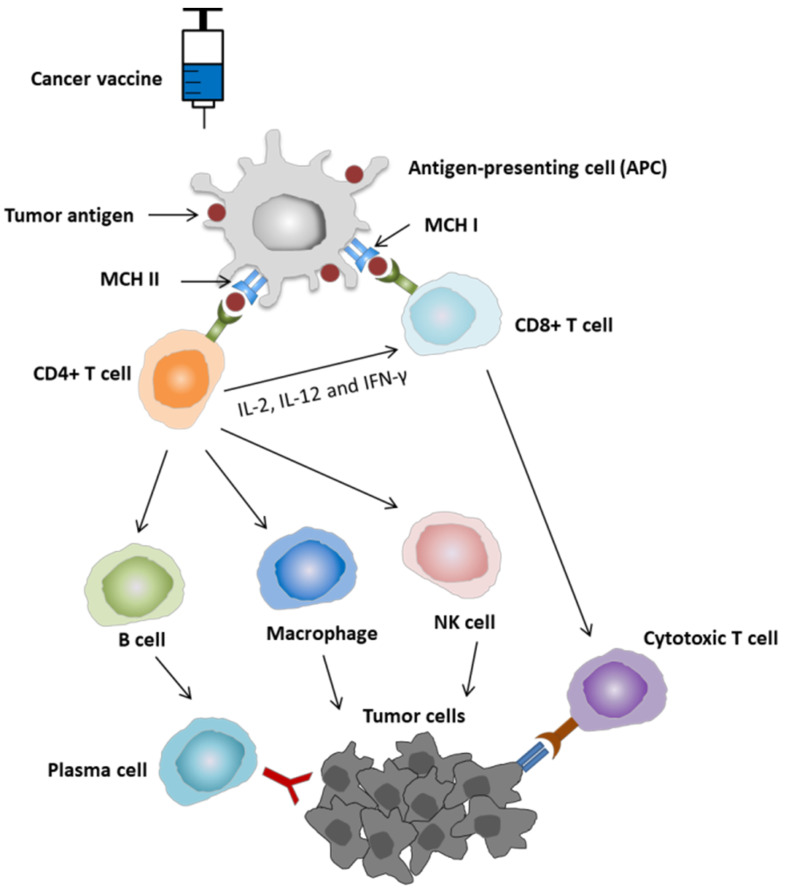Figure 1.
Mechanism of action of therapeutic cancer vaccine. Tumor antigens from vaccines are taken up and processed by antigen-presenting cells (APCs) and presented on MHC class I and MHC class II molecules on the surface of these cells. In the tumor-draining lymph nodes, the interaction of specific T cell receptor (TCR)—the MCH-I complex—lead to the activation of CD8+ T cells and cytotoxic T lymphocytes (CTLs) and subsequently antigen recognition in the tumor cells by CTLs. CTLs then destroy the tumor cells by different processes, such as the secretion of pro-inflammatory mediators (IFNγ, TNFα) or via the perforin/granzyme pathway. The presentation of tumor antigens on MHC-II complex also leads to CD4+ T helper cell activation, which facilitates the activation of several T cell subtypes. The secretion of IL-2, IL-12, and IFN-γ by CD4+ T helper cells promotes the activation of CD8+ T cells into CTLs. In addition, activated CD4+ T helper cells promote tumor clearance by enhancing the generation of antibodies against tumor antigens by B cells, killing the activity of natural killer cells and the phagocytosis of tumor cells by macrophages Abbreviations: MHC—major histocompatibility complex; APC, IL—interleukin; IFN—interferon; NK cell—natural killer cell (re-drawn from the presentation by L. Decoster et al. [20]).

